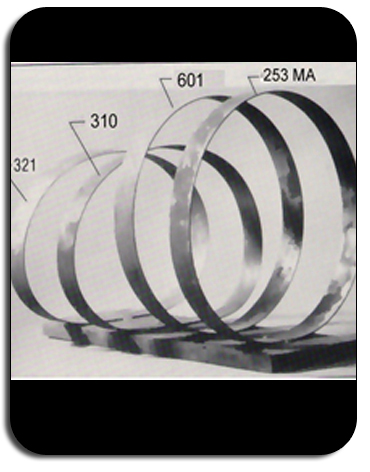Special Products
253 MA
The High-Strength, Heat-Resistant Stainless Steel
253 MA was developed over 30 years ago when the need for a heat resistant stainless steel with high strength, while maintaining good oxidation resistance was present in the industry. The leaner nickel content of 253 MA was not as significant of a development then as it is now. With nickel prices fluctuating more than ever before and higher than they have ever been, the lean 11% nickel content of 253 MA is a key contributor to being cost effective and stable. Still with the addition of rare earth elements, 253 MA still performs well at temperatures up to 2000°F (1093°C), similar to that of 310 stainless steel.
Performance Profile
253 MA is a lean austenitic heat resistant alloy with high strength and outstanding oxidation resistance. It offers an excellent combination of creep strength along with excellent resistance to oxidation, sulfidation, and erosion at high temperatures in an alloy containing just 11% nickel. Because of its lean chemistry, 253 MA is very economical compared to most heat resistant alloys.
253 MA obtains its heat resistant properties by tight control of micro alloy additions. The use of cerium in combination with silicon results in superior oxidation resistance to 2000°F (1093°C). Nitrogen, carbon, and cerium combine to provide creep rupture strength that is double that of type 310 and 309 stainless at 1600°F (871°C).
Features
- Oxidation resistance to 2000°F (1093°C)
- Good resistance to sulfidation
- Superior strength at elevated temperatures
- Good resistance to high temperature abrasion
Fabrication
253 MA is readily welded using 253 MA weld fillers of matching composition.253 MA AC/DC lime type electrodes are available from stock in popular sizes. 253 MA bare welding wire is available as straight lengths for GTA welding or spooled for GMA welding.
For best results do not preheat, keep interpass temperature low and use reinforced bead contours.
253 MA is formed in the same manner as the conventional austenitic stainless steels.
253 MA and other austenitic grades are quite ductile in the annealed condition. However, when machining, these chromium-nickel alloys work harden more rapidly and require more power to cut than plain carbon steels. Chips tend to be stringy, cold worked material of relatively high ductility.
For further information on fabricating 253 MA, please refer to the 253 MA Fabrication Manual.
Oxidation
253 MA has exceptional oxidation resistance up to about 2000°F (1093°C). Above this temperature, its oxidation resistance drops off. A combination of rare earths and silicon is responsible for the excellent oxidation resistance of this 21% Cr alloy. The rare earths increase diffusion rate of the silicon to the scale-metal interface. This promotes the development of a continuous SiO2 subscale, which in turn slows further oxide growth. Rare earth metals also improve adhesion and elasticity of the oxide scale, even under cyclic conditions. These rare earths, primarily cerium, increase the number of nucleation sites for the oxide. This results in a fine grained chromia and silica scale.
Sulfidation
253 MA has good resistance to hot SO2 bearing atmospheres, meaning sulfidation under oxidizing conditions. However, 253 MA is not resistant to reducing sulfidizing atmospheres, when sulfur is present as H2S. Note that even though the atmosphere may be oxidizing, the partial pressure of oxygen can be extremely low under solid sulfate deposits. Local sulfidation attack under the deposit can then occur
